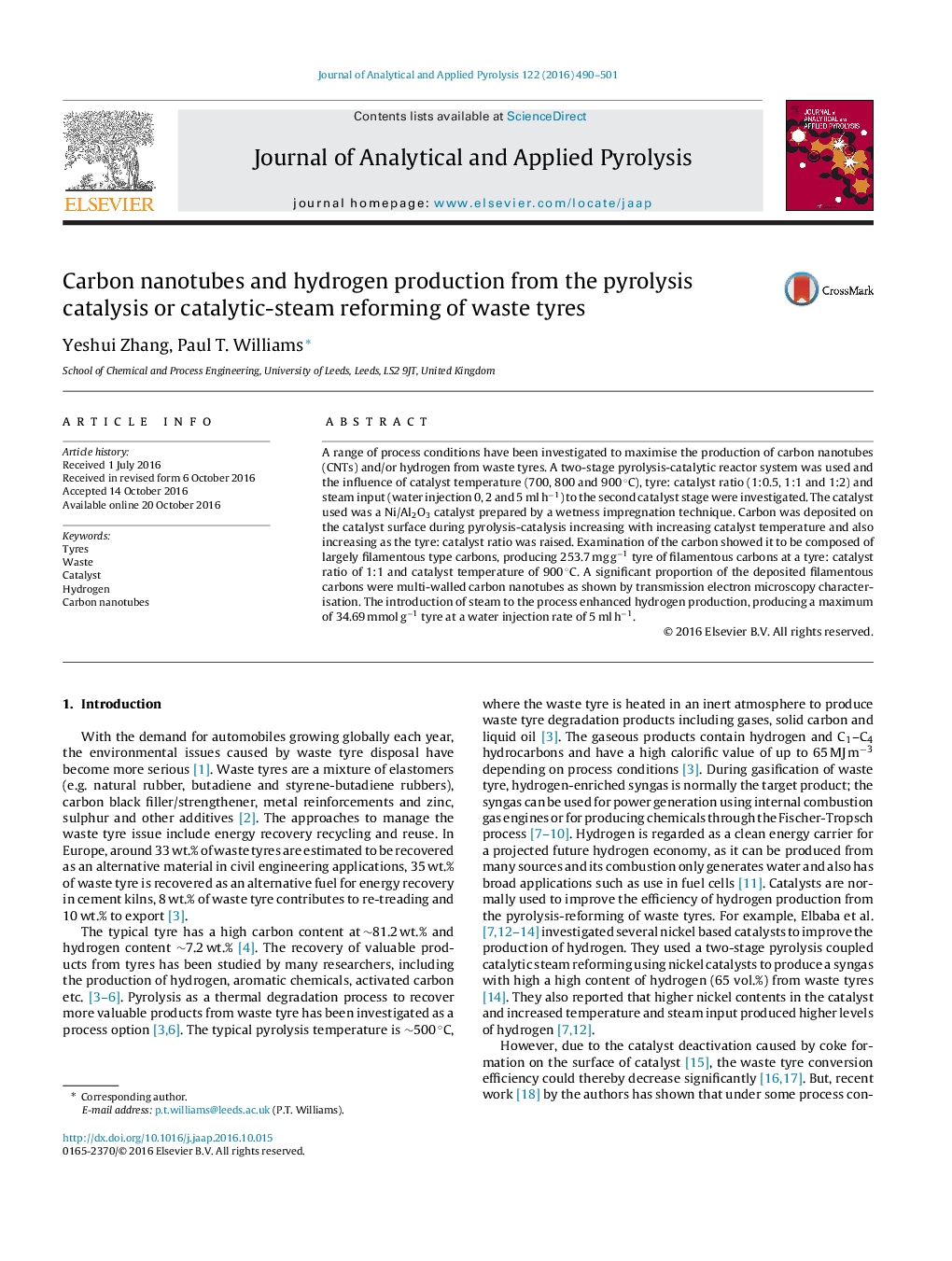| کد مقاله | کد نشریه | سال انتشار | مقاله انگلیسی | نسخه تمام متن |
|---|---|---|---|---|
| 5134802 | 1492955 | 2016 | 12 صفحه PDF | دانلود رایگان |
- Carbon nanotubes and H2 are produced from waste tyres with a Ni/Al2O3 catalyst.
- Catalyst carbon deposits contain carbon filaments and carbon nanotubes.
- Carbon deposits are maximised at higher temperature.
- Filamentous & nanotubes carbons reached a maximum of 253 mg gâ1 tyre.
- Steam addition enhanced H2 production (maximum of 34.69 mmol gâ1 tyre).
A range of process conditions have been investigated to maximise the production of carbon nanotubes (CNTs) and/or hydrogen from waste tyres. A two-stage pyrolysis-catalytic reactor system was used and the influence of catalyst temperature (700, 800 and 900 °C), tyre: catalyst ratio (1:0.5, 1:1 and 1:2) and steam input (water injection 0, 2 and 5 ml hâ1) to the second catalyst stage were investigated. The catalyst used was a Ni/Al2O3 catalyst prepared by a wetness impregnation technique. Carbon was deposited on the catalyst surface during pyrolysis-catalysis increasing with increasing catalyst temperature and also increasing as the tyre: catalyst ratio was raised. Examination of the carbon showed it to be composed of largely filamentous type carbons, producing 253.7 mg gâ1 tyre of filamentous carbons at a tyre: catalyst ratio of 1:1 and catalyst temperature of 900 °C. A significant proportion of the deposited filamentous carbons were multi-walled carbon nanotubes as shown by transmission electron microscopy characterisation. The introduction of steam to the process enhanced hydrogen production, producing a maximum of 34.69 mmol gâ1 tyre at a water injection rate of 5 ml hâ1.
343
Journal: Journal of Analytical and Applied Pyrolysis - Volume 122, November 2016, Pages 490-501
